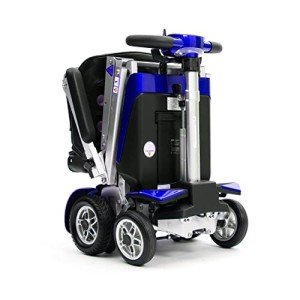Mobility Scooters: A Comprehensive Guide
Mobility scooters have become a necessary mode of transportation for lots of individuals dealing with mobility challenges. This post checks out the various aspects of mobility scooters, including their types, benefits, functions, and a guide for prospective buyers.
Comprehending Mobility Scooters
Mobility scooters are electrically powered gadgets designed for individuals with minimal mobility. They offer a means of transportation for individuals who might have difficulty strolling but still desire to maintain their independence. They come in different designs and features to cater to a large range of requirements.
Types of Mobility Scooters
Mobility scooters can usually be categorized into three primary types:
| Type | Description | Best For |
|---|---|---|
| Compact Scooters | These are small and lightweight, perfect for inside your home and short journeys. | Users with limited storage space or those who take a trip often. |
| Mid-size Scooters | A balance between mobility and stability, appropriate for both indoor and outdoor use. | Those who need to cover a variety of surfaces. |
| Heavy-duty Scooters | Big and robust, developed for rugged outside usage and much heavier people. | Users needing additional weight capability or going off-road. |
Key Features of Mobility Scooters
The choice of mobility scooter frequently depends upon the features that align with private requirements. Here are a few of the key functions to consider:
- Weight Capacity: Mobility scooters include different weight limitations. It is important to select a scooter that can effectively support the user's weight.
- Variety: The distance a scooter can take a trip on a single charge differs. Depending upon user requirements, one might go with scooters with a variety of as much as 40 miles.
- Speed: Most mobility scooters can reach speeds in between 4 to 8 mph. Consider what speed is comfortable and safe for the intended environment.
- Turning Radius: A compact turning radius is essential for indoor usage, permitting simpler navigation in tight spaces.
- Battery Type: The kind of batteries utilized can affect the scooter's efficiency. Lead-acid and lithium-ion batteries are the most typical.
Benefits of Using Mobility Scooters
The benefits of mobility scooters extend beyond just transport. Some key benefits consist of:
- Independence: Users can navigate their environment without relying on caregivers, promoting self-reliance and self-esteem.
- Health Benefits: Using a scooter can motivate outdoor activity, causing physical and mental health enhancements by lowering feelings of isolation.
- Convenience: Scooters can easily be operated in different environments, whether inside your home, in shopping malls, or outdoors.
Important Considerations When Buying a Mobility Scooter
When purchasing a mobility scooter, numerous considerations can assist make sure that you choose the ideal design:
Assess Individual Needs:
- Mobility level: Consider how much help the person will need.
- Series of usage: Determine where the scooter will mostly be used (inside your home, outdoors, on rough terrains, and so on).
Test Drive:
- Always test drive numerous designs to find an appropriate fit. Focus on comfort, ease of steering, and the scooter's responsiveness.
Review Safety Features:
- Look for scooters with appropriate security features like lights, signs, and anti-tip designs.
Inspect Warranty and Service Options:
- A trusted warranty and readily available service options are vital for long-term use.
FAQs about Mobility Scooters
1. How quickly do mobility scooters go?Mobility scooters typically have speeds varying from 4 to 8 mph, with most designed for safety rather than high-speed travel. 2. Are there weight limitations on mobility scooters?Yes, mobility
scooters include specific weight limitations, frequently varying from
250 pounds to over 500 pounds, depending upon the model. 3. Can mobility scooters be used indoors?Certain designs, especially compact scooters, are particularly developed for
indoor usage and are much easier to steer in tight areas. 4. How often do the batteries need to be replaced?Battery life can differ based upon use, however typically, with appropriate care, batteries might last between 1 to 3 years before requiring replacement
. 5. Are mobility scooters covered by insurance?Coverage can vary, however some insurance plans, including Medicare and Medicaid, might cover part of the expense. irvinrineheart.top 's advised to contact specific insurance providers. Mobility scooters function as a
important tool for lots of people, allowing them to preserve
their freedom and self-reliance. By comprehending the different types and functions of mobility scooters, individuals can make educated choices tailored to their specific needs.
Whether utilized for errands, interacting socially, or leisurely activities, mobility scooters can improve the quality of life for those with mobility restrictions. Investing in a mobility scooter is a decision that can significantly affect a person's day-to-day life. For that reason, people should thoroughly assess their options and choose a design that best aligns with their way of life and mobility requirements
.

